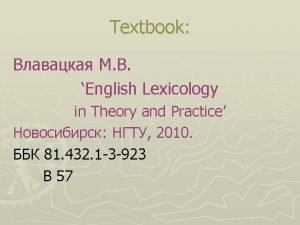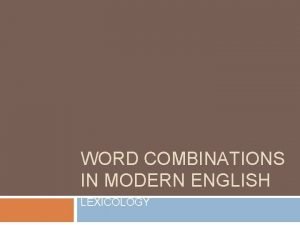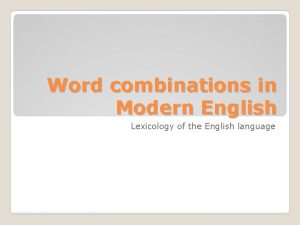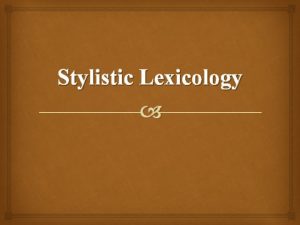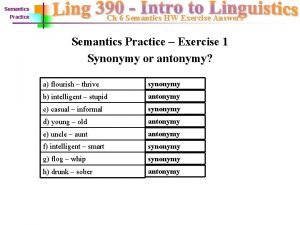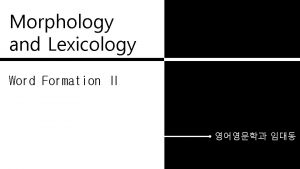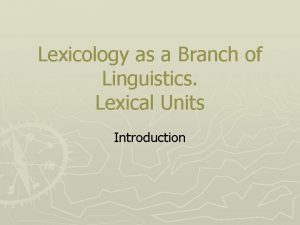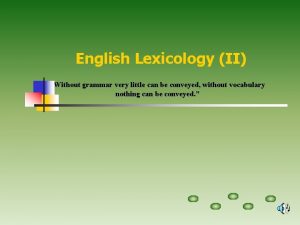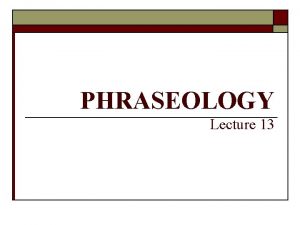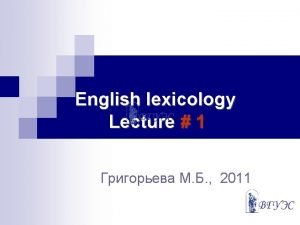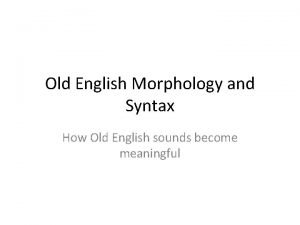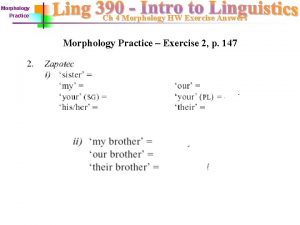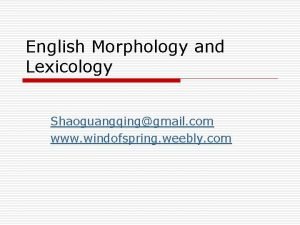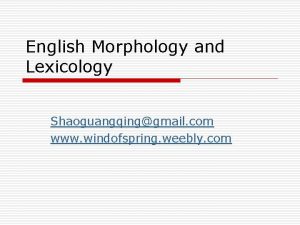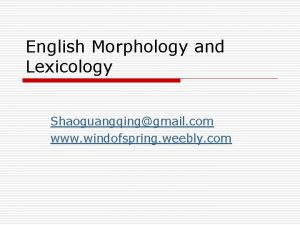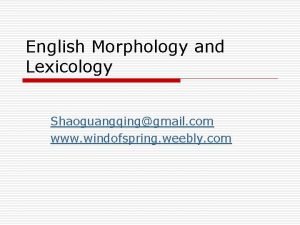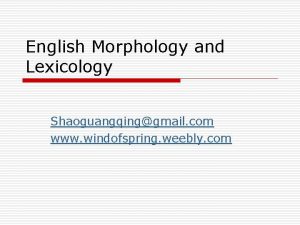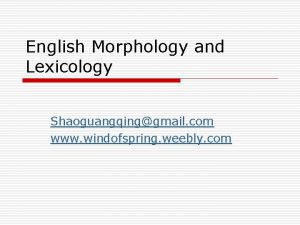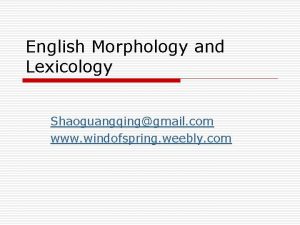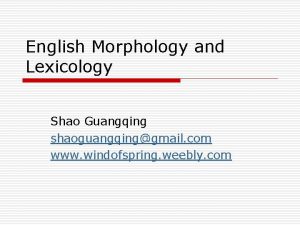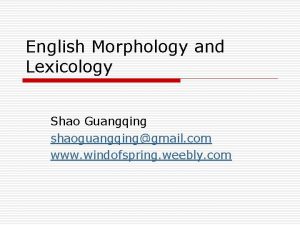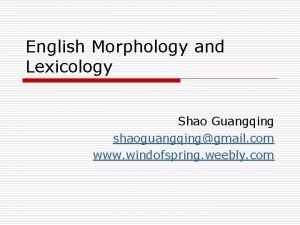English Morphology and Lexicology Shaoguangqinggmail com www windofspring





















- Slides: 21

English Morphology and Lexicology Shaoguangqing@gmail. com www. windofspring. weebly. com

Chapter 6 Sense relations and Semantic field o 6. 4 Antonymy n n n o o Types Characteristics Use 6. 5 Hyponymy 6. 6 Semantic field

6. 4 Antonymy

Types of antonyms o 1. Contradictory terms alive dead

Types of antonyms o 2. contrary terms

Types of antonyms o 3. relative terms n n Reciprocal social relationship; one of them cannot be used without suggesting the other. husband; wife

Contradictory vs. Relative o man/woman n n vs. husband/wife If an adult is not a man, then the adult must be a woman. (√) If an adult is not a husband, then the adult must be a wife. (×)

Characteristics of antonyms o 1. Many words, having synonyms, do not find their antonyms n o read, hit, house, book, power, magazine, etc. Therefore, in a language, there a great many more synonyms than antonyms.

Characteristics of antonyms o 2. A word which has more than one meaning can have more than one antonym. n n n fast (firm; secure): loose fast (quick): slow fast (pleasure-seeking; wild): sober

Characteristics of antonyms o 3. Some pairs of antonyms differ in semantic inclusion: e. g. one member is more specific than the other and the meaning of the specific is included in that of the general. n man/woman; tall/short; old/young

Characteristics of antonyms o 4. Contrary terms are gradable antonyms, differing in degree of intensity, so each has its own corresponding opposite. hot warm cool cold

Characteristics of antonyms o 4. Some words may have two different types of antonyms at the same time. n n happy unhappy sad

The uses of antonyms o o In reading, use antonyms to understand or interpret new/unfamiliar words; In writing, use antonyms to make your writing more effective or vivid. n n Idioms proverbs or sayings

6. 5 Hyponymy super-ordinates lhyper-:super lhypo-:under sub-ordinates

6. 5 Hyponymy

6. 5 Hyponymy 1. IN receptive processing of language: reading o Hyponyms can give the writing coherence, and provide the key to understanding the text. 2. IN productive processing of language: writing o Hyponyms can help achieve vividness, exactness and concreteness. o A good piece of writing needs superordinates and subordinates working mutually to achieve the desired effects.

6. 6 Semantic Field o German linguist Trier: field theory pear peach apricot apple lemon pineapple fruit orange date mango

6. 6 Semantic Field o 1. The vocabulary of a language is in constant change OLD

6. 6 Semantic Field o 1. The vocabulary of a language is in constant change NEW

6. 6 Semantic Field o 2. The semantic field of the same concept may not have the same members in different languages. n Kinship terms in Chinese (28) and English (7)

 Types of meaning
Types of meaning Bài thơ mẹ đi làm từ sáng sớm
Bài thơ mẹ đi làm từ sáng sớm Cơm
Cơm English lexicology theory and practice
English lexicology theory and practice Inflectional morpheme
Inflectional morpheme Word combinations
Word combinations Special lexicology
Special lexicology Word combination lexicology
Word combination lexicology Stylistic synonyms lexicology
Stylistic synonyms lexicology Semantic exercise
Semantic exercise Conversion in lexicology
Conversion in lexicology Lexicology is the branch of linguistics dealing with
Lexicology is the branch of linguistics dealing with Introduction to lexicology
Introduction to lexicology Bookish words stylistic
Bookish words stylistic Shortening in lexicology
Shortening in lexicology Types of transference lexicology
Types of transference lexicology Synchronic lexicology deals with …
Synchronic lexicology deals with … Coinage lexicology
Coinage lexicology Word classes exercises
Word classes exercises Old english morphology
Old english morphology Morphology exercises with answers
Morphology exercises with answers Bound and free morphemes
Bound and free morphemes



